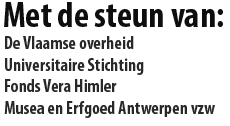J. TAELS
Over humor, levenskunst en tragiek
On Humour, Art of Life, and the Tragic
In his philosophical approach J. Taels attempts to elucidate two central meanings of humour: humour as the synonym of the comic, and humour as an art of life.
In the first section he discusses several central aspects of humour in the broad sense, which relates to all forms of expression (verba’, auditory, visual, mimicry, understanding etc.) that in one way or another appeal to our desire to laugh. Particularly he outlines the three most prominent theories on the meaning of the comic: the superiority theory, the release theory, and the incongruity theory.
In the second section he goes deeper into the art of life aspect of humour. In this narrow sense humour refers to an exemplary practice, ‘a universal human activity that invites us to become spectators upon our lives’ (Simon Critchley). By dislocating the familiar and by summoning unexpected contexts and horizons, humour makes people assume a contemplative attitude towards the world. At the same time, this theoretical attitude unfolds in an eminently practical marmer. Humour is, in this case, an indication of an art of life that is dosely related with practical wisdom, and that makes up a part of the ethical and spiritual praxis in life.
.
K. FEYAERTS
Humor en creativiteit taalkundig bekeken
Humour and Creativity from a Linguistic Point of View
This contribution focuses on the question how humour can be investigated from a linguistic point of view. For that purpose we advocate the paradigm of cognitive linguistics as a dynamic model of meaning research. In this paradigm, meaning is identified as a rich conceptual structure, which in running discourse is constantly being determined and mutually coordinated by the individual participants of the interaction. This observation pertains to the dimensions of active construal and intersubjectivity of meaning, respectively. From this usage-oriented perspective, humour can be described as marked, but structurally regular language use, which is operated through exactly the same construal mechanisms as in everyday, non-humorous language use. In any case, the linguistic analysis of humorous and creative language use provides us with a beuer insight in the flexibility of both semantic categories and the meaning system as a whole. Specifically, this contribution illustrates how the semantic mechanisms of metonymy and resonance can be exploited and manipulated in function of a deautomatization of the interpretation, on the basis of which a humorous effect can be achieved. Throughout our analysis, we demonstrate that a dynamic view on meaning requires the social dimension of meaning to be included as well. In the analysis of humorous utterances, it becomes dear that meaning emerges in a process of mutual coordination, in which participants constantly anticipate and evaluate their interlocutor’s knowledge, attitudes, emotions, judgements etc. Through this observation, we identify the intersubjective dimension as an inherent component of meaning and we regard creativity as a fundamental cognitive ability, whose systematic impact can be observed throughout all types of media.
.

